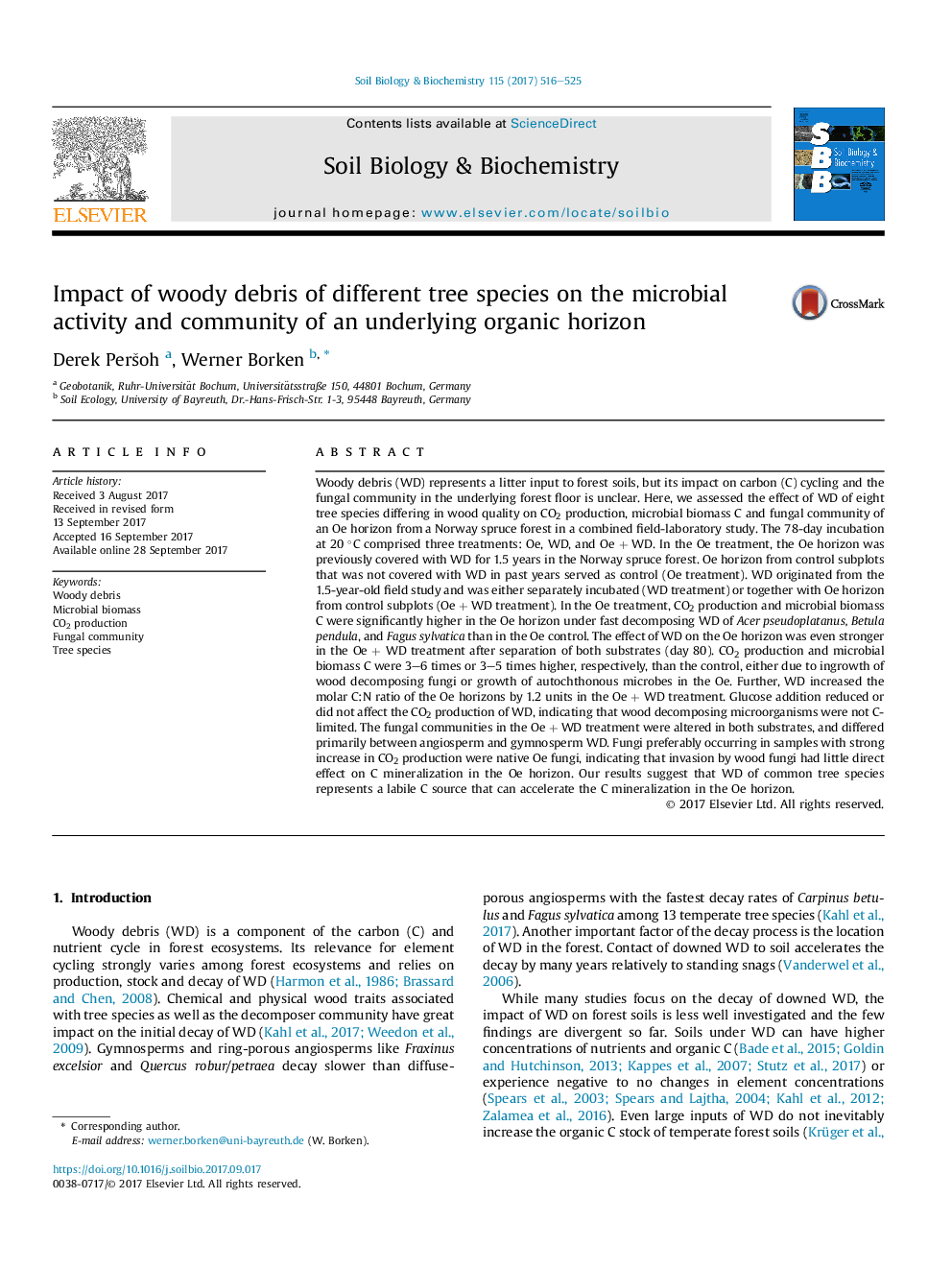| کد مقاله | کد نشریه | سال انتشار | مقاله انگلیسی | نسخه تمام متن |
|---|---|---|---|---|
| 5516273 | 1542569 | 2017 | 10 صفحه PDF | دانلود رایگان |
- Woody debris increased CO2 production, microbial biomass and C:N ratio in underlying Oe horizon.
- Effect of woody debris on C dynamics and fungal community in the Oe differed among tree species.
- Increased CO2 production in Oe was more related to native Oe fungi than to invading wood fungi.
Woody debris (WD) represents a litter input to forest soils, but its impact on carbon (C) cycling and the fungal community in the underlying forest floor is unclear. Here, we assessed the effect of WD of eight tree species differing in wood quality on CO2 production, microbial biomass C and fungal community of an Oe horizon from a Norway spruce forest in a combined field-laboratory study. The 78-day incubation at 20 °C comprised three treatments: Oe, WD, and Oe + WD. In the Oe treatment, the Oe horizon was previously covered with WD for 1.5 years in the Norway spruce forest. Oe horizon from control subplots that was not covered with WD in past years served as control (Oe treatment). WD originated from the 1.5-year-old field study and was either separately incubated (WD treatment) or together with Oe horizon from control subplots (Oe + WD treatment). In the Oe treatment, CO2 production and microbial biomass C were significantly higher in the Oe horizon under fast decomposing WD of Acer pseudoplatanus, Betula pendula, and Fagus sylvatica than in the Oe control. The effect of WD on the Oe horizon was even stronger in the Oe + WD treatment after separation of both substrates (day 80). CO2 production and microbial biomass C were 3-6 times or 3-5 times higher, respectively, than the control, either due to ingrowth of wood decomposing fungi or growth of autochthonous microbes in the Oe. Further, WD increased the molar C:N ratio of the Oe horizons by 1.2 units in the Oe + WD treatment. Glucose addition reduced or did not affect the CO2 production of WD, indicating that wood decomposing microorganisms were not C-limited. The fungal communities in the Oe + WD treatment were altered in both substrates, and differed primarily between angiosperm and gymnosperm WD. Fungi preferably occurring in samples with strong increase in CO2 production were native Oe fungi, indicating that invasion by wood fungi had little direct effect on C mineralization in the Oe horizon. Our results suggest that WD of common tree species represents a labile C source that can accelerate the C mineralization in the Oe horizon.
Journal: Soil Biology and Biochemistry - Volume 115, December 2017, Pages 516-525
